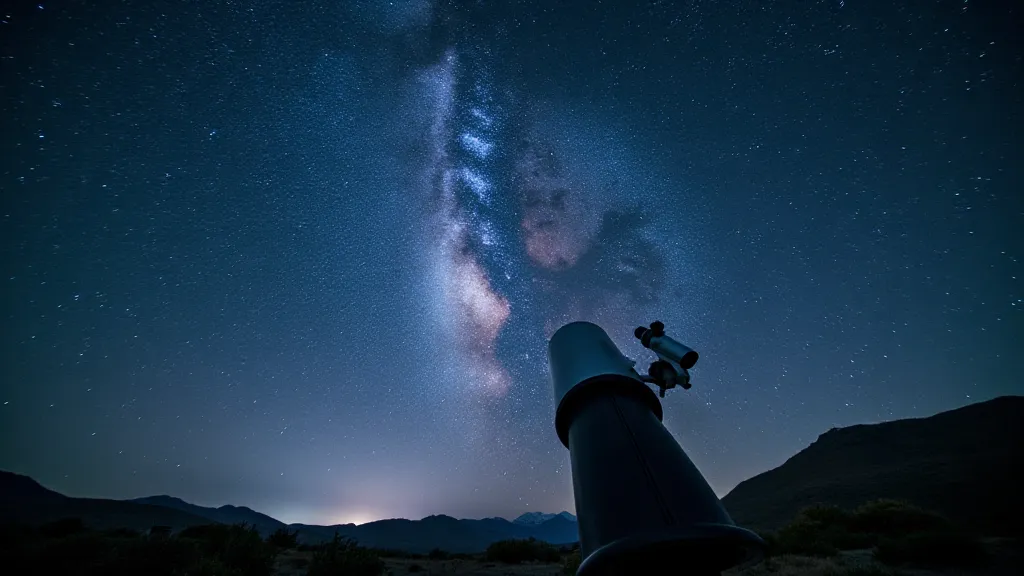Planetary Portraits: Unveiling the Whispers of Atmosphere with High-Power Telescopes
There's a particular resonance that echoes through old objects, a whisper of history clinging to their form. It’s the same feeling I get holding an antique accordion – the weight of decades, the echo of music, the dedication of a craftsman long gone. This same sentiment fuels my passion for planetary observing; it's about more than just seeing; it's about connecting with something vast, ancient, and subtly beautiful, demanding skill and a telescope capable of revealing the details most miss.
For many, the allure of astronomy begins with the moon, a readily visible beacon in the night sky. It’s a fantastic entry point, no doubt, but the true challenge, the true reward, lies in venturing beyond, into the swirling atmospheres of Jupiter, Saturn, Mars, and beyond. Capturing the delicate nuances of these planets - the subtle bands of Jupiter, the intricate rings of Saturn, the transient storms of Mars – is a pursuit that elevates amateur astronomy to an art form.

The Gear Required: More Than Just Aperture
Let’s be blunt: planetary observing at this level isn’t a beginner’s game. It demands significant investment in equipment, but it’s not solely about aperture. While a large aperture (the diameter of the telescope’s primary lens or mirror) allows you to gather more light, critical factors like focal ratio, resolution, and atmospheric seeing become paramount. Low focal ratios (f/5 to f/8) are generally preferred for capturing broad-scale features, while higher focal ratios (f/10 or higher) are essential for magnifying finer details.
Refractors, with their sharp, high-contrast images, remain a favorite amongst planetary observers. A well-corrected apochromatic refractor (APO) can reveal detail with a clarity that's difficult to achieve with other designs. Newtonian reflectors offer impressive aperture for a relatively lower cost, but can be more challenging to collimate (align the mirrors) to achieve optimal performance. Schmidt-Cassegrain telescopes (SCTs) provide a compact design and versatile focal lengths, making them a popular choice for those with limited space.
But the telescope itself is only half the battle. A robust equatorial mount is absolutely vital for accurately tracking the planets as they move across the sky. Even the slightest wobble will blur your images. High-quality eyepieces, often with longer focal lengths (25mm, 5mm, and even longer), are necessary to achieve the required magnification. Filters – narrowband filters to enhance contrast and block out unwanted light pollution – are also indispensable tools. And then there’s the camera…
Beyond Visual Observing: The Rise of Astrophotography
While visual observing remains a rewarding experience in itself, astrophotography has revolutionized planetary observing. Dedicated astronomy cameras, often cooled to reduce thermal noise, are capable of capturing far more detail than the human eye can perceive. Stacking multiple images – a process called image integration – further enhances the signal-to-noise ratio and reveals even fainter details.
The process isn't simple. It requires a degree of technical skill – understanding camera settings, mastering image processing software (like AutoStakkert! and PixInsight), and dealing with atmospheric turbulence. But the results can be breathtaking: vibrant, high-resolution portraits of Jupiter's Great Red Spot, the subtle banding of Saturn's atmosphere, and the polar ice caps of Mars.

The Dance with Seeing: A Constant Challenge
No discussion of planetary observing is complete without addressing “seeing.” Seeing refers to the stability of the Earth's atmosphere. Turbulent air distorts the incoming light, blurring the images and limiting the detail you can resolve. Even with the best equipment, poor seeing can render your efforts futile.
Experienced observers learn to assess seeing conditions before each observing session. This involves looking for “puckering” in the stars – a visual indication of atmospheric turbulence. Seeing scales, such as the Antares scale, provide a standardized method for quantifying seeing conditions. Adaptive optics, a technology that compensates for atmospheric turbulence, is increasingly being incorporated into astronomy equipment, though it remains relatively expensive.
Historical Echoes & the Pursuit of Beauty
There's a lineage to this pursuit, a connection to generations of observers who have peered through telescopes, painstakingly charting the secrets of the solar system. Think of Giovanni Cassini, charting Jupiter’s moons and discovering the Cassini Division in Saturn’s rings. Or William Herschel, mapping the rings of Uranus and discovering infrared radiation. Their dedication, their meticulous observations, laid the groundwork for our understanding of the planets.
My own grandfather, a talented woodworker, built model accordions as a hobby. He imbued them with a care and attention to detail that was remarkable. Working on my own equipment, collimating a telescope, processing images – it's a process that demands the same level of dedication, the same respect for craftsmanship. It’s a process of rediscovering the beauty hidden within the technical details.
Beyond the Data: The Emotional Reward
Ultimately, planetary observing is more than just collecting data. It's about experiencing the wonder of the cosmos, connecting with something far greater than ourselves. It’s about witnessing the beauty of a distant world, a world teeming with its own unique atmosphere and history. It's about appreciating the intricate workings of the universe, and finding a sense of peace and inspiration in the face of its vastness.
Like an old accordion, lovingly restored and brought back to life, revealing the echo of music past, revealing the whispers of atmosphere – it’s a journey of discovery, both of the cosmos and of oneself. It's a pursuit that demands patience, skill, and a deep appreciation for the subtle beauty that lies hidden within the celestial tapestry.






